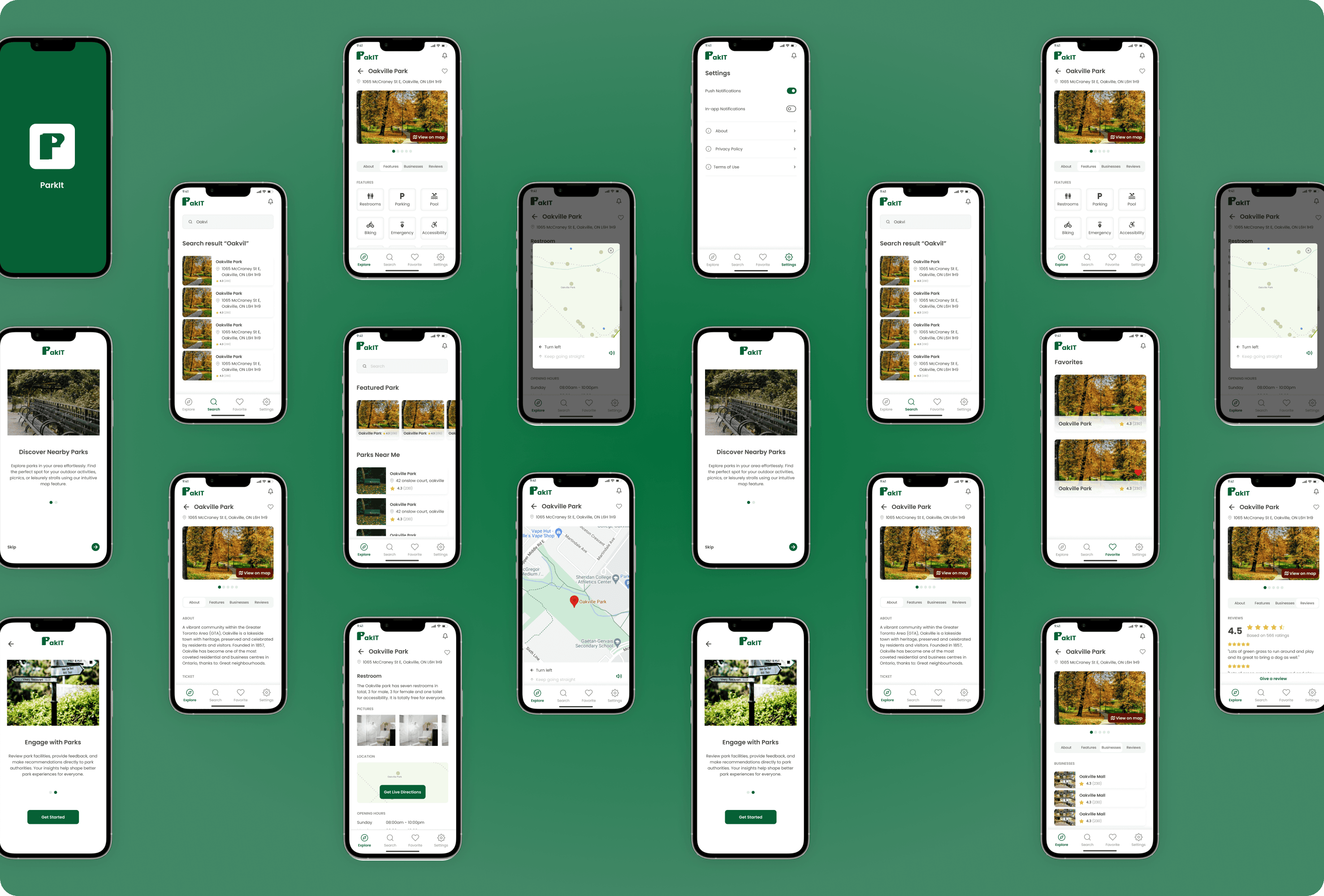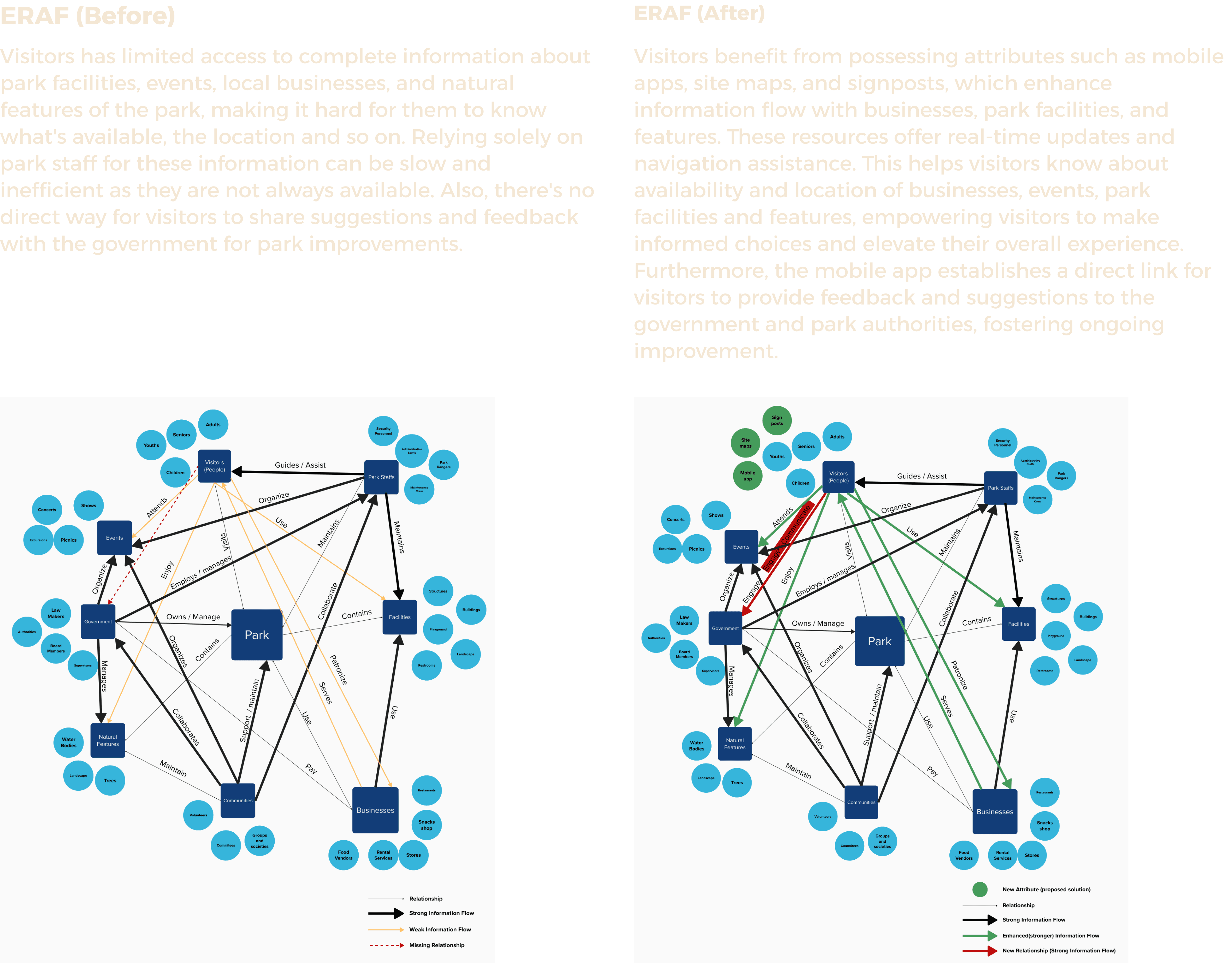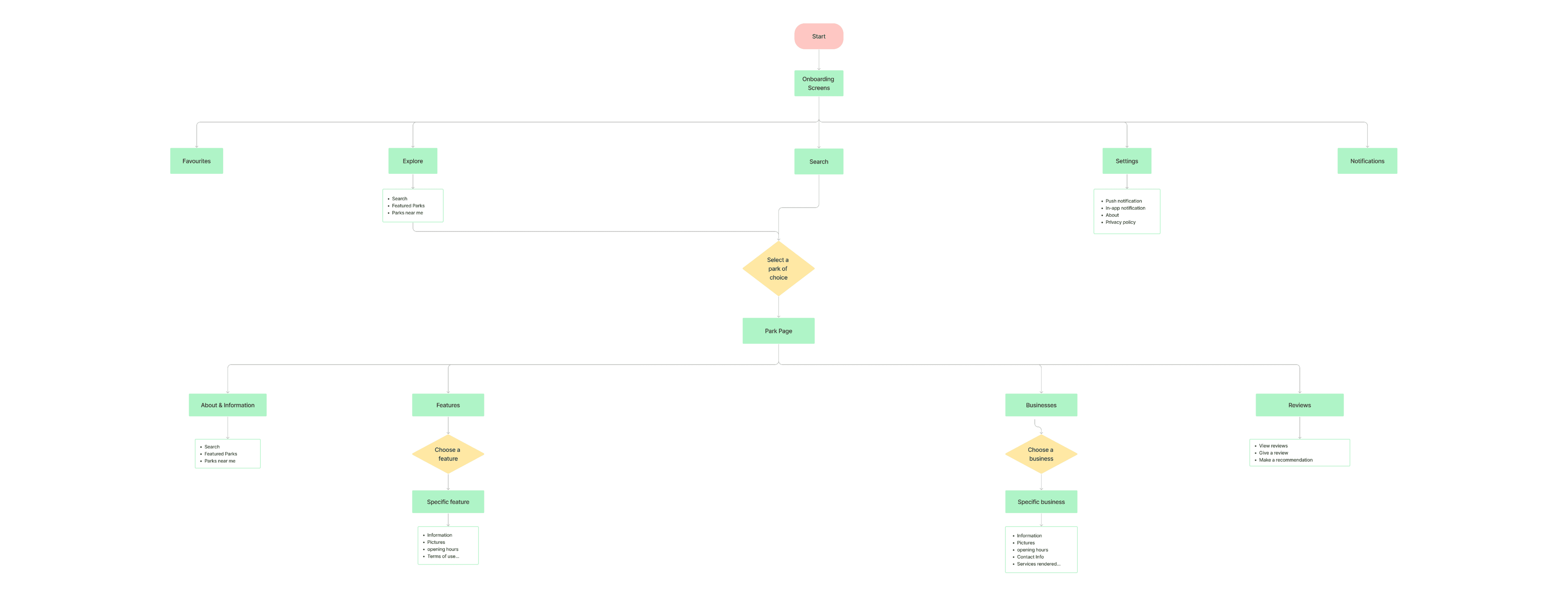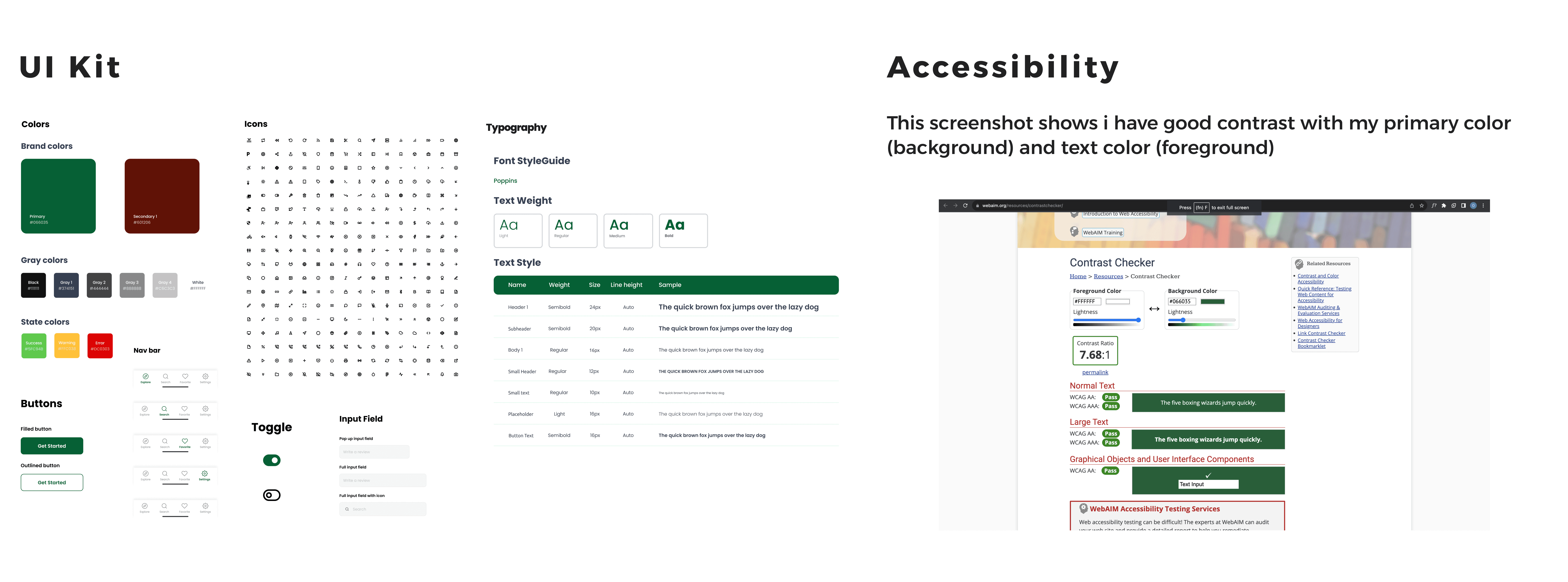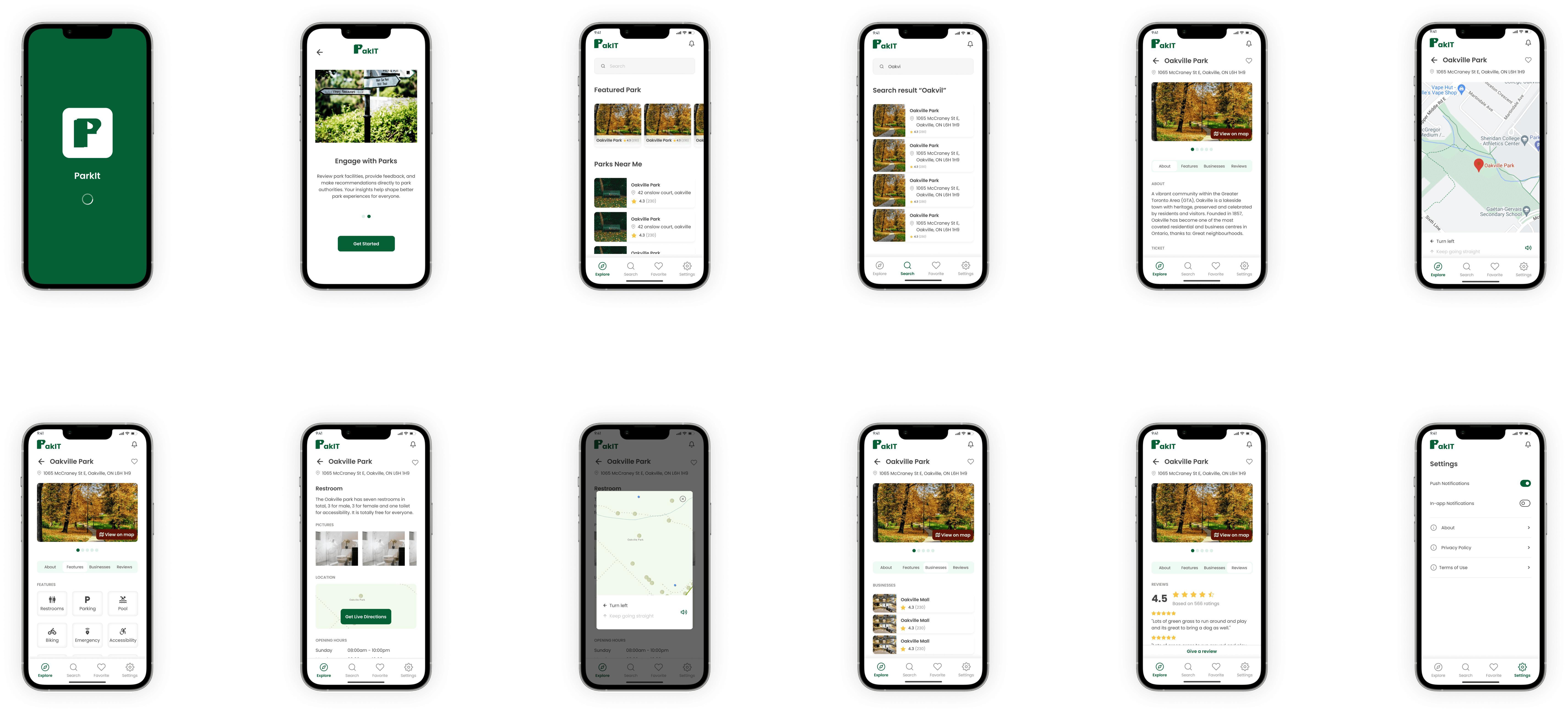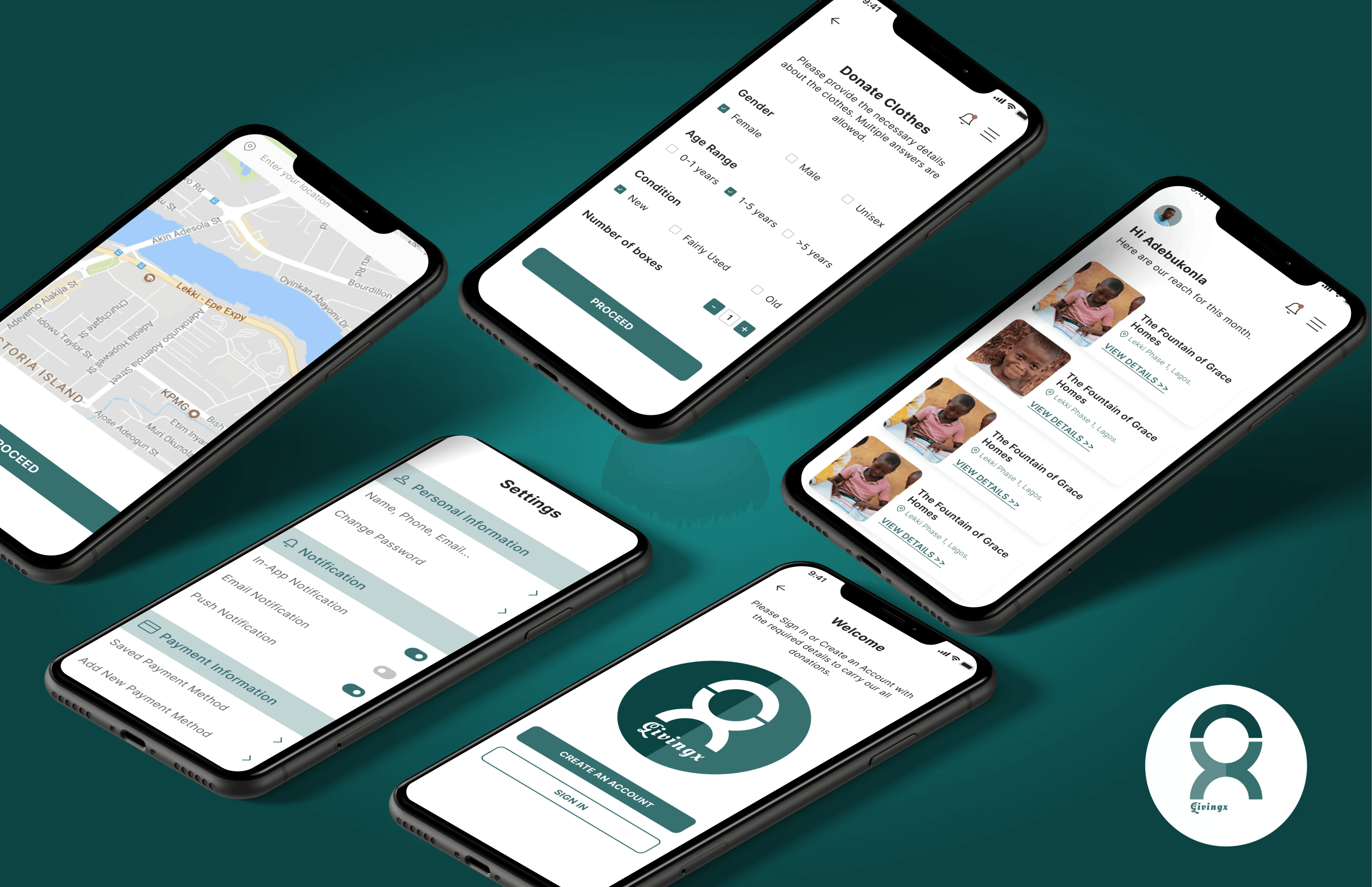PakIT
ParkIT is a comprehensive companion for effortless park exploration, simplifying outdoor experiences by seamlessly locating nearby parks and providing detailed information on availability, amenities, events, and more. With in-app directions and park maps, users can easily navigate park locations and facilities, aiding in decision-making and planning. Whether you're a tourist or a local, ParkIT ensures optimal outdoor enjoyment by putting the world of parks at your fingertips.
Client:
Sheridan College Project
Role:
UI Designer / UX Researcher
Year:
2023
View Prototype
Introduction
This project is one of the projects I worked on in Sheridan College while taking the Digital Product design Course. The project entails observing normal daily life of people going about various activities, documenting and finding out the shortcoming they encounter, then eventually proffering a suitable solution. After so much observatoions, events at the some Parks in Oakville, Canada caught my attention.
This course is a User Experience Design Course which thought us how to observe situations, notice the problems, understand people's needs and craft suitable solution to cater for those needs
Observation 1
During my initial days in Canada, navigating the new environment required some essential household items for my apartment. One morning, around 11 am, accompanied by a friend who was also new to Canada, we embarked on a journey to explore and procure the necessary items. Choosing to survey the area first, we began at Oakville Park, a mere 9-minute walk from my residence, to appreciate the serene beauty of nature. The park, sparsely populated that morning, offered a tranquil setting. As we strolled through the park, my friend unexpectedly began feeling unwell, realizing the urgency of needing a restroom. Despite our attempts to find a public restroom nearby, we were met with no success. Consequently, we sought the closest restaurant to provide relief. Fortunately, a restaurant was just a few minutes away. Upon arrival, to avoid any awkwardness, we decided to order something before requesting to use the restroom, which was our primary intent. After a brief wait, my friend emerged, relieved and grateful, having successfully navigated a potentially embarrassing situation.
Observation 2
Being a nature enthusiast, I had researched beautiful parks in my vicinity and compiled a list. Today, my choice was Westwood Park in Oakville. Around 3 pm, I set out, opting for the bus to reach the park. Upon arrival, the park was bustling with activity—families, kids playing, and couples enjoying picnics. The picturesque surroundings, adorned with trees and artistic walkways, created a delightful ambiance. Among the park's visitors, a particular family of four captured my attention. The parents and two sons, sitting close by, radiated joy and togetherness during what seemed like a family picnic, complete with an abundance of food and drinks. Although offered a drink, I politely declined, choosing instead to immerse myself in the scenic beauty. However, my focus shifted when I noticed the father becoming visibly concerned, approaching various people with questions. A tap on my shoulder revealed the urgency—they sought a restroom for their son. Despite my lack of knowledge, they quickly found a solution, and as the father and son departed with assistance, I had to cut short my stay to catch the next bus home.
The Problem
Based on an observational study I conducted at the park, it was evident that a significant challenge exists: the absence of accessible public restrooms and also inadequate information regarding facilities’ availability and location at the park. This issue leads to visitor’s frustration and inconvenience during their park visits. As a result, I came up with a solution called ParkIT.

Goal
The goal is to transform parks into visitor-friendly spaces. By introducing accessible restrooms and clear information about park facilities so as to ensure that visitors can enjoy their park visits without frustration or confusion.
Hypothesis
Based on my observation of the situation, I came up with some hypothesis statements to guide my investigations and help me gain valuable insights. I also included some hypothesis based on my ideation of the suitable solutions to the problem.
Really few people visit the parks on weekdays compare to the weekends
There are no visible close restrooms at the parks which has an impact on the accesibilty for the park’s visitors.
Building public restrooms at the park would impact the comfort and experienceof people visiting the park.
A mobile apps and sign post that shows the location of restrooms near a park would have an impact on the accessibility of restrooms for park’s visitors.
Solution
By addressing the challenges of people looking for public restrooms through a combination of digital and physical solutions can significantly improve the quality of life for individuals who may face difficulties in day-to-day activities, such as parents with young children, elderly individuals, and people with certain medical conditions.
Ideation 1
Creating a mobile app focused on efficiently listing nearby public restrooms and aiding users in locating them swiftly. The app's features encompass real-time details regarding restroom location, availability, and accessibility. Integration with Google Maps ensures precise directions to the identified restrooms. Additionally, users can opt for notifications, alerting them when a nearby public restroom is accessible, facilitating better activity planning and movement coordination.
Ideation 2
Advocating for increased investment from government, businesses, and communities in the construction of additional public restrooms, particularly in high-traffic areas like parks and public spaces. Implementing clear physical signage indicating the directions and locations of nearby public restrooms, with additional information on their availability, accessibility, opening hours, fees, and any pertinent regulations. This initiative aims to enhance restroom availability, streamline their identification, and facilitate prompt usage during urgent situations, benefiting individuals such as children, seniors, and those with medical conditions.
ERAF (Entities, Relations, Attributes, Flows)
This section shows the ERAF framework, which comprises Entities, Relations, Attributes, and Flows. This framework offers insights into how various components interact within the park system.
User Flow
This shows ParkIT user experience through a comprehensive User Flow Chart. It shows how the app guides users seamlessly from the initial search for parks to detailed exploration of facilities and amenities, event discovery, and convenient ticketing. The flow chart illustrates the intuitive journey users will embark upon, ensuring a user-friendly and engaging experience.
Wireframes
In the initial phase, I translated conceptual ideas into tangible form by sketching out various screens. Iterative processes were crucial during the wireframing stage, allowing me to refine and optimize the layout effectively. The transition to Figma facilitated seamless iterations and real-time adjustments, ensuring that the wireframes accurately captured the envisioned design with some noteworthy modifications along the way.

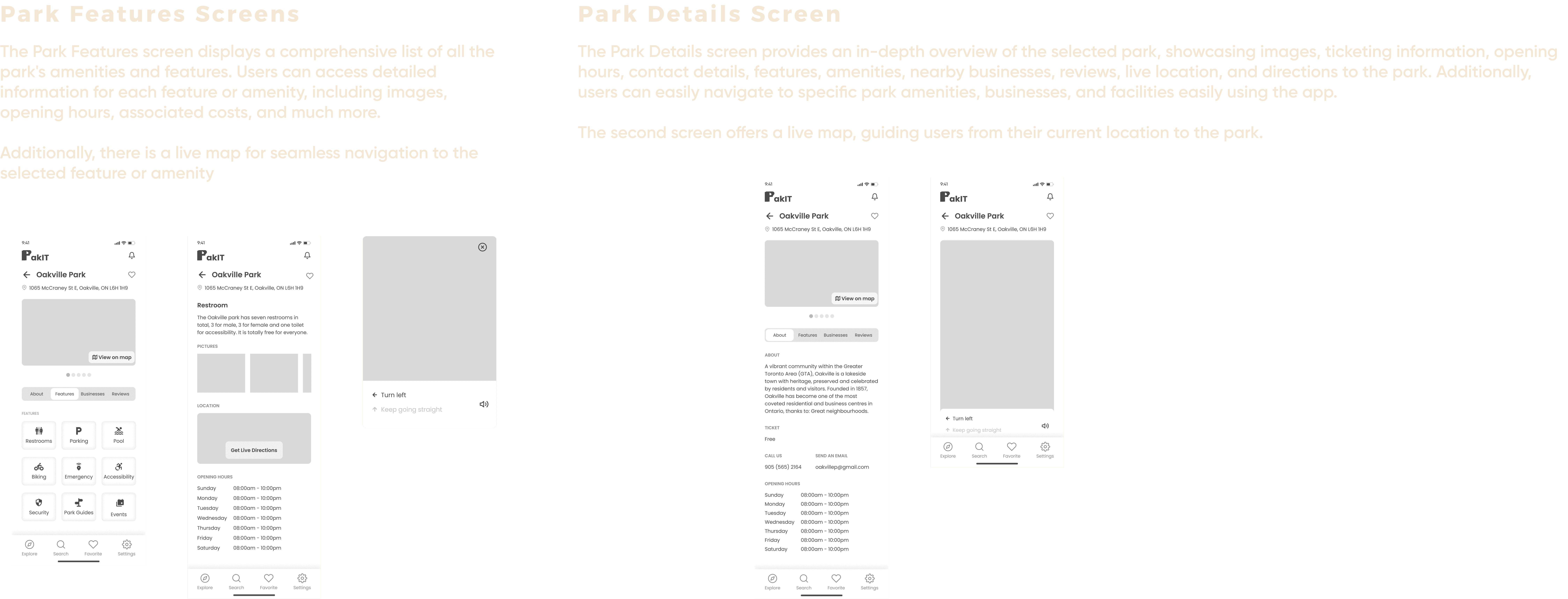
Style Guide
High Fidelity
Reflection
The glaring absence of public restrooms in frequented public places was not just surprising but an alarming revelation, prompting a reevaluation of expectations associated with popular leisure spots, especially parks.
The lack of restroom facilities, particularly in areas where children and the elderly frequent, highlighted a critical gap in park infrastructure, necessitating a broader solution.
Observations within the park unveiled challenges beyond restroom availability, including the absence of clear signage and a feedback mechanism, compounding visitors' experiences.
Enhancing the overall visitor experience required a multifaceted solution, including the construction of strategically placed restrooms and the development of a mobile app for real-time information and feedback.
Recognizing the pivotal role of governance systems in park development, the need for a direct communication channel between visitors and authorities was acknowledged to bring about the necessary improvements and foster community involvement in park enhancement initiatives.
Key Takeaway
The solution comprises two key elements:
First, the construction of strategically placed restroom facilities to address visitors' fundamental need for comfort and convenience.
Second, adopting a technological approach by developing a mobile app to provide real-time access to essential information about facility availability and park features, while also establishing a direct feedback channel to the government and park authorities via the app.
Furthermore, the implementation of site maps and signposts will guide visitors to their desired destinations, such as restrooms within the park, eliminating confusion and enhancing their overall experience.
In essence, the project underscores the importance of holistic solutions that marry physical infrastructure with technology, and involve the community in shaping the spaces they frequent.
The insights gained emphasize the broader impact of seemingly simple amenities on the overall well-being and enjoyment of public spaces.
